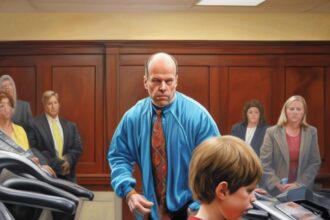De-risking has become a buzzword in the entrepreneurial world, and it involves removing risk from a business to attract potential buyers or investors. By reducing dependencies and diversifying revenue streams, companies can make themselves less risky. The concept of de-risking is often overlooked in entrepreneurial discussions, but it can be crucial for building a successful and high-value company. By following a three-step approach, entrepreneurs can start de-risking their businesses from day one.
The first step in the de-risking process is to start a small business that solves a problem for large companies. For example, Evren Ozkaya launched Supply Chain Wizard to help the pharmaceutical industry comply with new transparency and data management regulations. By addressing a crucial need in the industry, Ozkaya was able to secure clients and grow his business. The second step involves targeting the U.S. Federal Government as a client, as they are reliable payers and can provide valuable resources to support business growth. Jere Simpson’s software development shop, Kitewire, served government agencies like the FBI and U.S. Navy, allowing him to minimize risks and build a successful business.
The third step in the de-risking process is to leverage government resources to enhance business value. Rob Hrabe, CEO of VRC Metal Systems, utilized his military background to commercialize a new welding technology. With the government’s support, Hrabe was able to secure contracts and grow his business. Additionally, initiatives like the Small Business Innovation Research program provide funding for small businesses to further their R&D efforts and develop intellectual property. By tapping into these government resources, entrepreneurs can access non-dilutive funding and opportunities for growth.
Entrepreneurs like Ronald Steptoe have utilized non-dilutive grants to build successful businesses that address specific needs, such as Warrior Centric Health, which focuses on educating healthcare providers about the healthcare needs of veterans. By leveraging government funding and intellectual property, Steptoe’s company has the potential to expand beyond its original target audience. These examples demonstrate how building small businesses around solving problems for larger industries can lead to de-risked growth and valuable opportunities for long-term success.
In contrast to the traditional startup narrative of taking high risks for potential rewards, de-risked entrepreneurship offers a more stable and strategic approach to building successful companies. By focusing on solving problems for large clients, leveraging government resources, and accessing non-dilutive funding, entrepreneurs can mitigate risks and create sustainable growth opportunities. By following the de-risking path, founders like Ozkaya and Simpson have been able to spin out valuable tech-based platforms and achieve success in their respective industries.









